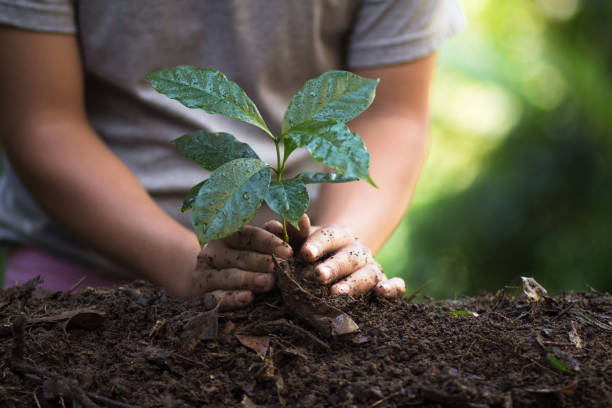Grants for environmental conservation are financial awards provided to individuals, organizations, or projects dedicated to safeguarding and enhancing our natural world.
These funds support initiatives ranging from reforestation and wildlife preservation to sustainable energy projects. By fostering innovation and community involvement, these grants play a crucial role in addressing environmental challenges.
Ultimately, they empower individuals and groups to contribute to a healthier planet, ensuring the preservation of biodiversity and the well-being of future generations.
The Crucial Role of Grants for Environmental Conservation
In a world grappling with environmental challenges, grants for conservation emerge as vital catalysts for change. These financial lifelines serve as the unsung heroes, enabling a symphony of efforts to protect and restore our planet. Let’s delve into the profound importance of these grants.
1. Safeguarding Biodiversity: Grants act as guardians of biodiversity, supporting projects that conserve and restore ecosystems. From protecting endangered species to preserving fragile habitats, these funds ensure that the rich tapestry of life on Earth remains intact.
2. Combatting Climate Change: With the specter of climate change looming, grants empower initiatives focused on sustainable practices and innovative technologies. From reforestation projects absorbing carbon to renewable energy solutions, these grants propel us toward a greener, more resilient future.
3. Empowering Local Communities: Conservation grants are not just about protecting nature; they empower local communities. By supporting sustainable livelihoods and community-based projects, these funds create a harmonious balance between human needs and environmental preservation.
4. Fostering Innovation: Grants become the spark that ignites innovation. Whether it’s developing cutting-edge solutions for waste management or pioneering research in conservation science, these funds fuel the engine of progress, pushing the boundaries of what’s possible.
5. Connecting People with Nature: Environmental conservation grants go beyond finances; they foster a sense of connection. By supporting educational programs, eco-tourism initiatives, and public awareness campaigns, these grants help bridge the gap between people and nature, cultivating a shared responsibility for our planet.
6. Resilient Ecosystems, Resilient Societies: Healthy ecosystems contribute to the resilience of societies. Conservation grants bolster efforts to build ecosystems that can withstand environmental shocks, from floods to wildfires, thereby safeguarding communities and their livelihoods.
7. Long-Term Impact: Grants for environmental conservation are not just short-term fixes. They lay the groundwork for sustained impact, creating a ripple effect that extends far beyond the initial project timeline. The investments made today ensure a legacy of environmental health for generations to come.
In essence, environmental conservation grants are not merely financial transactions; they are beacons of hope, catalysts for positive change. By supporting these initiatives, we become active participants in shaping a future where nature thrives, and humanity coexists harmoniously with the planet we call home.
List of Organizations awarding Grants for Environmental Conservation and their Websites
- World Wildlife Fund (WWF):
- Website: worldwildlife.org
WWF, a global force for nature, is committed to preserving the world’s most vulnerable ecosystems and species. Through a variety of grant programs, they empower initiatives that tackle issues such as deforestation, climate change, and endangered species protection.
- The Nature Conservancy:
- Website: nature.org
Harnessing the power of science and collaboration, The Nature Conservancy works tirelessly to protect lands and waters. Their grants support projects focused on climate resilience, sustainable agriculture, and the restoration of critical habitats.
- National Geographic Society – Conservation Trust:
- Website: nationalgeographic.org
The iconic National Geographic Society provides grants through its Conservation Trust to fund projects addressing critical environmental challenges. From wildlife conservation to innovative technology solutions, their support spans a diverse range of initiatives.
- Environmental Protection Agency (EPA) – Grants and Funding:
- Website: epa.gov
The EPA offers various grants supporting environmental conservation efforts, covering areas such as clean water, air quality, and sustainable practices. Their funding programs contribute to the nation’s collective efforts in protecting the environment.
- Global Environment Facility (GEF):
- Website: thegef.org
As an international partnership, GEF provides grants for projects that address global environmental issues. Their focus areas include biodiversity conservation, climate change mitigation, and the promotion of sustainable development worldwide.
- Rainforest Foundation:
- Website: rainforestfoundation.org
Dedicated to preserving the world’s rainforests and supporting indigenous communities, the Rainforest Foundation offers grants to projects focused on forest protection, community empowerment, and sustainable resource management.
- Conservation International:
- Website: conservation.org
Conservation International tackles global environmental challenges through innovative solutions. Their grants support projects that promote sustainable development, protect vital ecosystems, and address climate change.
- Wildlife Conservation Society (WCS):
- Website: wcs.org
Committed to saving wildlife and wild places, WCS provides grants for conservation initiatives worldwide. From protecting iconic species to preserving critical habitats, their support spans a wide range of projects.
- Green Climate Fund (GCF):
- Website: greenclimate.fund
The GCF finances projects that help developing countries adapt to climate change and reduce greenhouse gas emissions. Their grants support transformative initiatives that contribute to a low-emission and climate-resilient future.
- BirdLife International:
- Website: birdlife.org
Focused on bird conservation, BirdLife International provides grants for projects that protect avian species and their habitats. Their work extends globally, contributing to the broader efforts of biodiversity conservation.
- Earthwatch Institute:
- Website: earthwatch.org
Earthwatch engages volunteers and scientists in environmental research, offering grants for projects that address pressing conservation challenges. Their approach emphasizes citizen science and hands-on involvement.
- The Ocean Foundation:
- Website: oceanfdn.org
Dedicated to marine conservation, The Ocean Foundation supports projects that preserve and restore ocean ecosystems. Their grants contribute to efforts ranging from coral reef protection to sustainable fisheries.
- National Fish and Wildlife Foundation (NFWF):
- Website: nfwf.org
NFWF funds projects that promote the conservation of fish, wildlife, and their habitats. Their grants support initiatives with a focus on sustainable resource management and biodiversity preservation.
- Conservation Leadership Programme (CLP):
- Website: conservationleadershipprogramme.org
CLP supports early-career conservationists with grants and training programs. Their initiatives focus on empowering the next generation of leaders in biodiversity conservation.
- Global Wildlife Conservation:
- Website: globalwildlife.org
Striving to prevent the extinction of endangered species, Global Wildlife Conservation provides grants for projects that protect and restore critical habitats around the world.
- National Forest Foundation:
- Website: nationalforests.org
Supporting initiatives in national forests, the National Forest Foundation offers grants for projects that enhance ecosystem health, promote recreation, and engage local communities in sustainable forest management.
- Marine Stewardship Council (MSC):
- Website: msc.org
MSC grants support fisheries that meet sustainable fishing standards. Their certification and funding programs contribute to the conservation of marine ecosystems and the responsible management of fishery resources.
- The Pew Charitable Trusts – Environment:
- Website: pewtrusts.org
Pew supports environmental conservation through grants that address challenges such as protecting public lands, preventing overfishing, and promoting policies for a cleaner, healthier planet.
- Island Conservation:
- Website: islandconservation.org
Focused on preventing extinctions on islands, Island Conservation provides grants for projects that remove invasive species and restore island ecosystems. Their work has a direct impact on biodiversity conservation.
- Wildlife Conservation Network (WCN):
- Website: wildnet.org
WCN supports conservationists working to protect endangered species worldwide. Their grants provide crucial funding for on-the-ground projects aimed at preserving biodiversity.
- Global Greengrants Fund:
- Website: greengrants.org
A grassroots environmental fund, Global Greengrants provides grants to community-led initiatives addressing local environmental issues. Their approach emphasizes empowering communities to drive change.
- Sustainable Agriculture and Forestry (SAF) Program:
- Website: sustainableagforestry.org
The SAF Program offers grants for projects promoting sustainable practices in agriculture and forestry. Their support contributes to the conservation
- The Rockefeller Foundation – Food, Agriculture & the Environment:
- Website: rockefellerfoundation.org
The Rockefeller Foundation focuses on grants that address the intersection of food, agriculture, and environmental sustainability. Their initiatives aim to create resilient food systems while preserving natural resources.
- National Park Foundation:
- Website: nationalparks.org
Supporting the preservation and enhancement of national parks, the National Park Foundation provides grants for projects that conserve natural landscapes, protect wildlife, and enhance visitor experiences.
- Amazon Environmental Research Institute (IPAM):
- Website: ipam.org.br
Focused on the Amazon rainforest, IPAM conducts research and provides grants for projects that address deforestation, climate change, and sustainable development in the region.
- Conservation Alliance for Seafood Solutions:
- Website: seafood-solutions.org
The Conservation Alliance for Seafood Solutions grants support sustainable seafood initiatives. Their collaborative approach involves various stakeholders to ensure responsible practices in the seafood industry.
- Wildlife Habitat Council:
- Website: wildlifehc.org
Partnering with businesses, the Wildlife Habitat Council offers grants for projects that enhance wildlife habitats in corporate landscapes. Their programs promote biodiversity conservation in urban and industrial areas.
- Climate and Land Use Alliance:
- Website: climateandlandusealliance.org
Dedicated to addressing climate change through land-use practices, this alliance provides grants for projects promoting sustainable agriculture, forest conservation, and community resilience.
- Freshwater Trust:
- Website: thefreshwatertrust.org
Focused on freshwater conservation, the Freshwater Trust offers grants for projects that protect and restore rivers and streams. Their work contributes to improving water quality and habitat for aquatic species.
- Clean Energy Ministerial – Global Lighting and Energy Access Partnership (Global LEAP):
- Website: cleanenergyministerial.org
Global LEAP provides grants to initiatives that promote clean and efficient energy access worldwide. Their focus includes supporting projects that reduce energy poverty while minimizing environmental impact.
Explore these websites, discover the impactful work of these organizations, and consider how you can contribute to the collective effort of preserving our planet for current and future generations.
How to Apply for the Grants for Environmental Conservation
1. Research Thoroughly: Begin by identifying the most suitable grant opportunities for your project. Research the objectives, priorities, and eligibility criteria of various organizations. Tailor your application to align seamlessly with the values and focus areas of the grant provider.
2. Understand the Requirements: Scrutinize the application requirements meticulously. From project proposals and budgets to timelines and expected outcomes, ensure your submission adheres to each criterion. Pay close attention to any specific formats or guidelines stipulated by the grant provider.
3. Craft a Compelling Project Proposal: Your project proposal is the heart of your application. Clearly articulate your project’s purpose, goals, methodology, and anticipated impact. Use compelling language to convey the urgency and significance of your conservation initiative. Back your proposal with data, evidence, and success stories if applicable.
4. Develop a Realistic Budget: Create a detailed budget that reflects the financial requirements of your project. Be transparent about how the grant funds will be utilized. Include line items for every aspect, from personnel costs to materials and outreach activities. Ensure that your budget aligns with the guidelines provided by the grant provider.
5. Demonstrate Impact and Sustainability: Grant providers are often keen on supporting projects with long-term impact. Clearly outline how your project will contribute to environmental conservation beyond the grant period. Showcase strategies for sustainability, community involvement, and the lasting benefits your initiative will bring.
6. Showcase Your Team’s Expertise: Highlight the qualifications and expertise of your project team. Emphasize relevant experience, successful projects, and partnerships that demonstrate your capacity to execute the proposed conservation efforts. This builds confidence in the grant provider regarding your team’s ability to deliver results.
7. Engage Stakeholders and Partners: Demonstrate community and stakeholder engagement by showcasing letters of support, collaboration agreements, or endorsements from relevant entities. This not only adds credibility to your application but also reflects a broader commitment to your project.
8. Craft a Compelling Narrative: Your application is not just a set of documents; it’s a story. Craft a narrative that captivates the reader. Clearly communicate your passion for conservation, the challenges you aim to address, and the transformative impact your project promises.
9. Review and Revise: Before submitting, rigorously review your application. Check for coherence, consistency, and clarity. Seek feedback from peers or mentors in the field. A polished application not only reflects professionalism but also enhances your chances of standing out among competitors.
10. Meet Deadlines: Respect submission deadlines. Late applications are typically not considered. Plan your timeline effectively, allowing ample room for unforeseen challenges. Submit your application well in advance to avoid any last-minute technical glitches.
11. Follow Up Appropriately: After submission, don’t disappear. Follow up appropriately by acknowledging receipt of your application and expressing gratitude for the opportunity. If there’s an opportunity for clarification or additional information, be responsive and proactive.
The Impact of the Grants for Environmental Conservation
1. Reforesting the Green Lungs: Conservation grants breathe life into ambitious reforestation projects. These initiatives combat deforestation, replenishing our planet’s green lungs and providing a lifeline for countless species. Witnessing once-barren landscapes transform into vibrant ecosystems underscores the enduring impact of these grants.
2. Empowering Local Guardians: Beyond financial injections, grants empower local communities to become stewards of their environment. From sustainable livelihoods to community-led conservation efforts, the ripple effect of these grants extends far beyond initial project boundaries, fostering a sense of ownership and responsibility.
3. Saving Species from the Brink: Conservation grants stand as beacons of hope for endangered species. They fund critical efforts to protect habitats, halt poaching, and implement breeding programs. The impact is tangible, with species teetering on the brink of extinction making remarkable comebacks, echoing the resilience of nature.
4. Harnessing Sustainable Solutions: Grants propel innovation in sustainable technologies. From clean energy projects to eco-friendly agricultural practices, these funds catalyze solutions that not only address environmental challenges but also contribute to a more sustainable, resilient future for communities worldwide.
5. Building Climate Resilience: The impact of conservation grants resonates in the battle against climate change. Supporting initiatives that enhance ecosystem resilience, these grants help communities withstand the intensifying impacts of climate-related events, fostering adaptability in the face of an uncertain future.
6. Preserving Biodiversity Hotspots: Conservation grants target biodiversity hotspots, preserving the unique tapestry of life on Earth. By protecting these hotspots, grants contribute to maintaining ecosystems in equilibrium, ensuring the survival of countless species and safeguarding the interconnected web of life.
7. Inspiring Future Guardians: The impact extends to future generations through educational programs supported by grants. By fostering environmental awareness, these initiatives nurture a generation of eco-conscious individuals equipped with the knowledge and passion to continue the legacy of conservation.
8. Unleashing Data-Driven Conservation: The impact of grants resonates in the realm of conservation science. Funding supports cutting-edge research, enabling scientists to gather crucial data for informed decision-making. This scientific foundation underpins effective conservation strategies with a lasting impact.
9. Transforming Wastelands into Habitats: Grants drive the restoration of degraded landscapes. From polluted water bodies to industrial wastelands, the transformative impact is visible as these areas are rejuvenated, becoming thriving habitats once again.
10. Fostering Global Collaboration: The impact of conservation grants transcends borders. By fostering international collaboration, these grants create a global network of conservationists, researchers, and communities united by a shared vision of a sustainable and biodiverse planet.
A Comprehensive Guide to Writing a Winning Grant Proposal
Securing a grant for your environmental conservation project is not just about aspirations; it’s about articulating a compelling vision that resonates with potential funders. Dive into the world of successful grant proposal writing with these engaging and informative tips to elevate your project above the competition.
1. Know Your Audience: Tailor your proposal to the interests and priorities of the grant provider. Research their mission, focus areas, and past projects they’ve funded. Align your proposal with their values, demonstrating a clear understanding of what matters most to them.
2. Start with a Captivating Introduction: Your proposal’s introduction should be a hook, capturing the attention of the reader from the first sentence. Engage them with a compelling story, a surprising fact, or a thought-provoking quote that sets the tone for the transformative journey your project promises.
3. Clearly Define the Problem: Articulate the environmental challenge your project addresses. Clearly define the problem, providing data, examples, and anecdotes that illustrate the urgency and significance of your conservation initiative. Paint a vivid picture that compels the reader to empathize with the issue at hand.
4. Articulate Your Solution: Present your project as the beacon of hope. Clearly outline your solution, detailing how your approach will address the identified problem. Use a combination of evidence, research findings, and innovative strategies to showcase the effectiveness of your proposed solution.
5. Develop a Strong Methodology: Outline a robust plan of action. Break down your project into manageable, clearly defined steps. Provide a timeline, assign responsibilities, and explain how each phase of your project contributes to the overarching goal. A well-structured methodology instills confidence in your project’s feasibility.
6. Showcase Your Team’s Expertise: Highlight the qualifications, experience, and passion of your project team. Clearly communicate why your team is uniquely equipped to execute the proposed conservation efforts. Demonstrate relevant expertise, successful past projects, and a collaborative spirit that adds credibility to your proposal.
7. Quantify Impact: Numbers speak volumes. Quantify the impact your project aims to achieve. Whether it’s hectares of restored habitat, tons of carbon offset, or the number of species protected, clearly articulate the measurable outcomes of your conservation efforts. This not only demonstrates accountability but also showcases the tangible results of the grant investment.
8. Develop a Realistic Budget: Craft a detailed budget that aligns with the goals of your project. Be transparent about how the grant funds will be utilized, and ensure that each line item is justified. A well-thought-out budget not only instills confidence but also reflects your commitment to responsible fiscal management.
9. Highlight Collaboration and Partnerships: Showcase your ability to collaborate. Highlight any partnerships, community involvement, or stakeholder engagement that strengthens your project’s impact. Demonstrating a network of support reinforces the sustainability and depth of your conservation efforts.
10. Tell a Compelling Story: Your proposal is more than a document; it’s a narrative. Weave a compelling story that connects the reader emotionally to your project. Use language that evokes passion, describes the journey, and makes the case for why your project is not just necessary but indispensable.
11. Review and Revise: Before submission, review your proposal meticulously. Check for clarity, consistency, and coherence. Seek feedback from peers or mentors in the field. A polished proposal not only reflects professionalism but also increases your chances of standing out among competitors.
Conclusion:
As we conclude this exploration into the world of environmental conservation grants and successful proposal writing, let’s reflect on the pivotal role each grant and proposal plays in shaping a future where our planet thrives.
1. A Symphony of Impact: Environmental conservation grants orchestrate a symphony of impact that reverberates across landscapes, communities, and ecosystems. Each funded project is a note in this grand composition, contributing to the resilience and vitality of our shared home.
2. The Power of Vision: A successful grant proposal is more than a document; it’s a testament to the power of vision. It is the articulation of a dream that envisions a world where nature and humanity coexist harmoniously. It is a blueprint for change, a call to action that resonates with funders, partners, and communities alike.
3. A Commitment to Excellence: In the world of conservation, excellence is not an option; it’s a necessity. Every well-crafted proposal represents a commitment to excellence – in research, planning, and execution. It reflects a dedication to the highest standards, ensuring that funded projects have a meaningful and lasting impact.
4. Nurturing Global Citizenship: Beyond the financial transactions, grants and proposals nurture a sense of global citizenship. They create bridges that connect diverse communities, organizations, and individuals, fostering collaboration and a shared responsibility for the well-being of our planet.
5. Shaping Tomorrow’s Leaders: The impact of grants extends beyond the immediate project outcomes. It shapes tomorrow’s leaders – individuals inspired by the possibilities of conservation, armed with the knowledge to address environmental challenges, and driven by a passion to safeguard our natural world for generations to come.
6. A Tapestry of Success Stories: As each grant-supported project unfolds, it weaves a tapestry of success stories. From revitalized ecosystems and protected species to empowered communities and innovative solutions, these narratives embody the transformative power of conservation efforts funded through grants.
7. A Call for Collective Action: Grant proposals are not solitary endeavors; they are calls for collective action. They beckon like-minded individuals and organizations to join hands in the pursuit of a sustainable future. The success of one project amplifies the potential for broader, systemic change.
The world of environmental conservation grants and proposal writing is a dynamic landscape where dreams take shape, visions find expression, and impactful change becomes a reality. Each grant awarded and every successful proposal written contributes to a legacy of environmental stewardship that transcends borders and spans generations.
As we navigate this journey, may our commitment to conservation excellence continue to shape a future where the beauty and resilience of our planet endure. Together, let us continue crafting a narrative of success that resonates with the heartbeats of nature and the aspirations of humanity.
Recommended Books for Enhancing Grant Writing Skills
To further enhance your grant writing skills and stay on top of these trends, consider diving into some insightful literature.
Here are a few recommended books:
- The Ultimate Guide to Federal Grant Applications: Techniques for Success – This book is a must-read for anyone looking to navigate the complex world of federal grant applications. It offers practical techniques, insider tips, and a comprehensive understanding of what it takes to create successful federal grant applications.
- Advanced Grant Writing for Nonprofits : Focuses on sophisticated techniques for experienced grant writers. It delves into complex aspects of proposal development, offering strategies for dealing with competitive grant environments and large funding bodies.
- Mastering Grant Writing: A Nonprofit’s Guide to Effective Proposal Development and Submission: This book serves as a comprehensive guide, covering the entire process of grant writing. It includes tips on understanding funders’ perspectives, crafting compelling narratives, and the nuances of proposal submission.
- Becoming the Grant Guru: Freelancer’s Guide to Success : Tailored for freelance grant writers, this book provides insights into building a successful career in grant writing. It includes strategies for finding clients, managing projects, and maximizing the impact of grant proposals.
- The Small Business’s Guide to Winning Grants : This resource is particularly useful for small businesses looking to secure grants. It offers practical advice on identifying suitable grant opportunities, understanding the requirements of small business grants, and crafting winning proposals.
- Grant Readiness Guide: Preparing to Triumph in Funding Opportunities : A comprehensive resource for organizations at various stages of grant preparedness. It provides a roadmap for developing organizational capacity, aligning projects with funders’ goals, and creating compelling applications.
- Her Capital: Unlocking Women’s Small Business Grants: Specifically designed for women entrepreneurs, this book offers guidance on navigating the landscape of small business grants for women. It includes insights into grant sources, application strategies, and tips for leveraging grants to grow a business.
Unlock Your Grant Success!
Join our email list now for exclusive grant-writing tips and unique grant opportunities delivered straight to your inbox. Click here to Subscribe. Don’t miss out!






